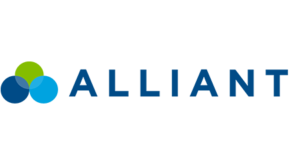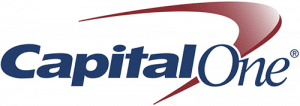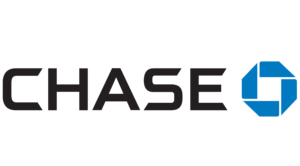9 Best Bank Accounts for Kids Under 18 (Checking & Savings) – Rates for 2021
Opening a bank account for your kids and becoming a joint account holder is a great way to:
- Reinforce basic banking concepts that we take for granted, such as adding and withdrawing funds
- Teach basic budgeting skills and demonstrate the importance of spending less than you earn
- Demonstrate the importance of saving, even if it’s just a few dollars per month, to the young child in your life
- Get a head-start on long-term savings goals, such as higher education supplies and tuition
- Communicate the value of having long-term financial goals in general
Here’s a closer look at the differences between the two major types of kid-friendly bank accounts, plus a roundup of the best checking and savings accounts for kids under age 18.
Bank Accounts for Minor Children: Joint vs. Custodial
With the exception of legal emancipation, U.S. law prohibits children under age 18 from having sole ownership of deposit accounts, such as checking and savings accounts. However, most U.S. banks and credit unions allow children to hold deposit accounts together with a parent.
Minor-friendly bank accounts come in two forms with very different characteristics and permissions: joint accounts and custodial accounts.
Joint Bank Accounts
If you’re married or in a committed relationship, you may hold one or more joint financial accounts with your spouse or partner. The same idea applies to accounts held jointly with minor children; both you and your child can make deposits and withdraw funds as you see fit.
Parents can exercise considerable control over accounts held jointly with children. When your kid is too young to work legally, you’re likely to be the sole or principal source of their funds. If you want to set a strict weekly or monthly spending limit for them, simply fund the account at the desired level and frequency.
Generally, joint deposit accounts are ideal for day-to-day expenses and short- to medium-term savings. Most checking accounts place few restrictions, if any, on deposit and withdrawal amounts and frequencies. By law, savings accounts limit withdrawals to six per statement cycle, with excess withdrawals subject to penalty fees.
If your child – and you – can resist the temptation to raid it for short-term needs, a high-yielding joint savings account is suitable for long-term savings goals, such as college tuition, your kid’s first car, or a security deposit on their first apartment.
Custodial Bank Accounts
Under the Uniform Gifts to Minors Act (UGMA) and Uniform Transfers to Minors Act (UTMA), parents or legal guardians may establish custodial accounts for the benefit of minor children without involving a trust fund or trustee. UGMA and UTMA permit a wide range of assets, but most banks limit custodial deposit accounts to cash only.
The minor holder of a custodial account is its owner and primary beneficiary. However, until the minor reaches the legal age of majority, the account’s custodian acts as its steward. A parent or legal guardian may serve as the custodian or designate an outsider – typically a financial institution or third-party financial advisor – to fill this role.
In either case, the custodian is a fiduciary, which means that they may make disbursements from the account to cover qualifying, reasonable expenses but must otherwise manage the account in the minor’s best interests. Full control of the account and its contents must pass to the minor when they reach the age of majority.
Since a minor custodial account beneficiary can’t access their account’s funds without the custodian, custodial accounts are not appropriate for day-to-day use or short- or medium-term savings. They are suitable for long-term savings goals, such as higher education.
Best Checking Accounts for Kids Under Age 18
Most of these accounts are free or low-cost and have low minimum balance requirements. Some have decent interest rates as well. But be sure to carefully review all account disclosures before applying.
Unless otherwise noted, these accounts are all structured as joint ownership accounts, not custodial.
1. Copper Banking
A Banking Solution Built for Teens
 Copper is a teen-friendly banking solution designed for kids ages 13 to 17 (and their parents too). The Copper app and debit card teach teens how to make smart financial decisions by creating a platform for parents and teens to connect and learn together.
Copper is a teen-friendly banking solution designed for kids ages 13 to 17 (and their parents too). The Copper app and debit card teach teens how to make smart financial decisions by creating a platform for parents and teens to connect and learn together.
Use the Copper debit card to shop everywhere and withdraw cash for free at over 55,000 ATMS. The Copper App allows you to monitor spending and instantly send money in seconds. Features like Automatic Saving teaches teens strong financial habits by automatically set aside a portion of the money they make for savings.
Copper uses secure encryption and authentication to protect your account and all Copper Accounts are insured up to $250,000 through Evolve Bank & Trust.
- Minimum Deposit and Balance Requirements: The minimum deposit is $10, but there’s no ongoing minimum balance requirement or maintenance fee.
- Account Opening Bonus: None.
- Yield: None.
- Rewards and Incentives: Copper has a nice referral program that could earn you some extra cash for referring friends — $3 for each successful referral. See terms and conditions for details.
- Overdraft Fees: Copper does not charge overdraft fees, period.
- Possible Fees: See terms and conditions for a complete list of potential fees.
Learn More
2. Alliant Credit Union Free Teen Checking Account
0.25% APY on All Balances With E-Statements; 1 Direct Deposit Per Month
 The Alliant Credit Union Free Teen Checking Account is designed for parents and kids ages 13 to 17. With no monthly maintenance fees or balance requirements, it’s an ideal first checking account for teens with part-time or summer jobs. All accounts come with a free Visa ® debit card and a free first box of checks with both account holders’ names.
The Alliant Credit Union Free Teen Checking Account is designed for parents and kids ages 13 to 17. With no monthly maintenance fees or balance requirements, it’s an ideal first checking account for teens with part-time or summer jobs. All accounts come with a free Visa ® debit card and a free first box of checks with both account holders’ names.
All balances yield 0.25% APY when you opt into electronic statements and receive at least one direct deposit per month. When the minor account holder turns 18, the account automatically converts to an adult checking account.
You must be an Alliant Credit Union member to open a Free Teen Checking account on your child’s behalf. If you live in the Chicago area, you can join at a physical branch. If not, the easiest way to join is to become a supporter of Foster Care to Success, a partner charity that doesn’t restrict membership by geography. You can find more details about Alliant membership here.
- Minimum Deposit and Balance Requirements: None.
- Account Opening Bonus: None.
- Yield: 0.25% APY on all balances when you opt in to e-statements and receive at least one direct deposit each month.
- Rewards and Incentives: Access to more than 80,000 fee-free ATMs around the United States. The account has an automatic daily debit card limit of $100 in cash withdrawals and $300 in total spending to control overspending by young account owners. Each month, account holders get up to $20 in ATM rebates from out-of-network ATMs.
- Overdraft Options: You can opt into an overdraft line of credit. Alliant reserves the right to decline transactions that would normally result in overdrafts, depending on prior account usage.
- Possible Fees: 1% foreign transaction service fee for ATM withdrawals, $25 per nonsufficient funds (NSF) transaction.
Learn More
3. Capital One MONEY Teen Checking Account
0.10% APY on All Balances
 The Capital One MONEY Teen Checking Account is a fee-free, paperless checking account for kids ages 13 to 17. With no minimum or ongoing balance requirements and a decent yield on all balances, it’s another solid day-to-day account for kids flexing their financial muscles for the first time.
The Capital One MONEY Teen Checking Account is a fee-free, paperless checking account for kids ages 13 to 17. With no minimum or ongoing balance requirements and a decent yield on all balances, it’s another solid day-to-day account for kids flexing their financial muscles for the first time.
All accounts come with a free Mastercard® debit card but no checks or electronic bill pay option. Parents can set text or email alerts for specific account actions and transactions to monitor their teen’s spending from a distance.
The MONEY Teen Checking account also comes with a nice array of budgeting and balance-tracking features for basic financial education. Account holders under age 18 have a daily limit of $500 in non-PIN transactions, $500 in PIN transactions, and $500 in ATM withdrawals.
- Minimum Deposit and Balance Requirements: None.
- Account Opening Bonus: None.
- Yield: 0.10% APY on all balances.
- Rewards and Incentives: Access to about 40,000 fee-free ATMs around the United States and free mobile deposits through the Capital One app.
- Overdraft Options: If you have a savings account with Capital One 360, you can opt into fee-free automatic savings transfers to cover transactions that would typically result in a negative balance. Otherwise, you can apply for an overdraft line of credit, subject to credit approval and fees.
- Possible Fees: $25 expedited debit card processing fee, $5 statement copy fee.
Learn More
4. Wells Fargo Clear Access Banking
Robust Suite of Money Management Tools
 The Wells Fargo Clear Access Banking suite is a teen-friendly product available to kids ages 13 to 17 (though kids 16 and under require an adult co-owner). With no maintenance fee for younger account holders and low balance requirements, it’s a great general-purpose checking account for kids learning to budget. However, this account has no yield, so it’s not appropriate for stashing away funds for a rainy day.
The Wells Fargo Clear Access Banking suite is a teen-friendly product available to kids ages 13 to 17 (though kids 16 and under require an adult co-owner). With no maintenance fee for younger account holders and low balance requirements, it’s a great general-purpose checking account for kids learning to budget. However, this account has no yield, so it’s not appropriate for stashing away funds for a rainy day.
Wells Fargo has a slew of educational and practical tools for kids and parents. The “My Spending Report with Budget Watch” feature helps kids build a budget and track spending on their own, while a robust set of parental controls lets you monitor and restrict spending.
- Minimum Deposit and Balance Requirements: $25 minimum opening deposit; no ongoing balance requirement.
- Account Opening Bonus: None.
- Yield: None.
- Rewards and Incentives: 24/7 fraud monitoring and fee-free person-to-person (P2P) transfers through the Wells Fargo app or online banking site.
- Overdraft Options: You can opt into overdraft protection that covers shortfalls on transactions that would normally result in a negative balance. You must link a Wells Fargo savings account, and there’s a $12.50 fee per transfer. If you prefer not to transfer funds out of a linked savings account, you can opt into standard overdraft protection, which covers shortfalls at a slightly higher fee.
- Possible Fees: $2.50 per non-Wells-Fargo ATM withdrawal, $15 NSF transaction fee, 3% foreign transaction fee. The monthly service fee is $5 for account holders age 25 and older.
Learn More
5. Chase High School Checking
Automatically Converts to Chase Total Checking at Age 19; No Joint Owner Needed
 Chase High School Checking is an account designed specifically for kids ages 13 to 17. Minor account holders must open the account with an adult as a co-owner and link their accounts to that person’s checking account to allow direct control over the account’s funding.
Chase High School Checking is an account designed specifically for kids ages 13 to 17. Minor account holders must open the account with an adult as a co-owner and link their accounts to that person’s checking account to allow direct control over the account’s funding.
When the minor account holder turns 19, the account turns into a standard Chase Total Checking account and the adult account holder is removed. There is no yield on any balances but no monthly maintenance fee either.
- Minimum Deposit and Balance Requirements: $25 to open and maintain.
- Account Opening Bonus: None, though targeted offers may occur from time to time.
- Yield: None.
- Rewards and Incentives: Fee-free access to more than 16,000 Chase and affiliated ATMs plus lightning-fast money transfers to family and friends with Chase QuickPay® with Zelle®.
- Overdraft Options: If you opt into Chase’s overdraft program, transactions for which you have insufficient funds are allowed to go through. You’re charged $34 per overdraft item, with a limit of three per day.
- Possible Fees: See terms for a complete list of fees.
Learn More
6. Chase First Banking
Stringent Parental Controls and Account Management Tools
 Chase First Banking is a joint checking account designed to teach kids and younger teens the fundamentals of sound money management. Much like the training wheels on your youngster’s first bike, Chase First Banking guides minor account holders in the right direction without ever removing the controls that prevent serious mishaps.
Chase First Banking is a joint checking account designed to teach kids and younger teens the fundamentals of sound money management. Much like the training wheels on your youngster’s first bike, Chase First Banking guides minor account holders in the right direction without ever removing the controls that prevent serious mishaps.
Those controls are built into a debit card with customizable parental alerts to clue adult custodians in on how and where their kids are spending and flexible caps on spending that ensure kids don’t overspend in one place.
- Minimum Deposit and Balance Requirements: $25 to open and maintain.
- Account Opening Bonus: None, though targeted offers may occur from time to time.
- Yield: None.
- Rewards and Incentives: Fee-free access to more than 16,000 Chase and affiliated ATMs, plus a robust suite of educational tools for first-time account holders.
- Overdraft Options: Chase’s overdraft program charges $34 per overdraft item (limit three per day) when you opt in.
- Possible Fees: $34 returned item fee.
Learn More
Best Savings Accounts for Kids Under Age 18
All of the following accounts are subject to a strict withdrawal limit of no more than six per statement cycle, under U.S. law.
Unless otherwise noted, all are joint accounts rather than custodial. Legally, the account’s minor owner can deposit, withdraw, and move funds before their 18th birthday.
7. Alliant Credit Union Kids Savings Account
0.55% Yield on All Balances Above $100; Open to Kids Under Age 13
 With a $5 minimum opening deposit and a yield of 0.55% APY on all balances, the Alliant Credit Union Kids Savings Account is ideal for long-term savings goals.
With a $5 minimum opening deposit and a yield of 0.55% APY on all balances, the Alliant Credit Union Kids Savings Account is ideal for long-term savings goals.
This account is open to kids under age 13, giving them even more time to accrue compound interest. Kids 13 or older aren’t eligible to apply, but account holders can keep the account open as long as they wish. All account activity is subject to parental review and approval, ensuring minor account holders can’t raid their balances before they ripen.
- Minimum Deposit and Balance Requirements: $5 to open and maintain, though Alliant covers the deposit for young account holders.
- Account Opening Bonus: $5 to cover the initial deposit requirement.
- Yield: 0.55% APY on all balances above $100.
- Rewards and Incentives: No monthly fees for members who opt into e-statements.
- Overdraft Options: None.
- Possible Fees: Excess transaction fees charged at Alliant’s discretion.
Learn More
8. Capital One 360 Kids Savings Account
0.30% Yield on All Balances; No Age Limit to Open
 The Capital One 360 Kids Savings Account is another high-yield online savings account designed for younger kids. With no opening deposit or ongoing balance requirements and an automatic savings plan option, it’s an ideal set-it-and-forget-it account for kids working toward future savings goals.
The Capital One 360 Kids Savings Account is another high-yield online savings account designed for younger kids. With no opening deposit or ongoing balance requirements and an automatic savings plan option, it’s an ideal set-it-and-forget-it account for kids working toward future savings goals.
There’s no age threshold to open an account, and parents have final approval over funds transfers. Seamless mobile check deposit is a nice perk.
- Minimum Deposit and Balance Requirements: There’s no minimum balance requirement or deposit requirement here.
- Account Opening Bonus: None, though targeted offers may apply.
- Yield: 0.30% APY on all balances.
- Rewards and Incentives: You can set up savings goals or make recurring transfers based on an automated savings plan.
- Overdraft Options: None.
- Possible Fees: $5 paper statement fee; excess transaction fees charged at Capital One’s discretion.
Learn More
9. PNC Bank ‘S’ is for Savings® Account
Robust Educational Suite
 The PNC Bank ‘S’ is for Savings® Account is fee-free for account holders under age 18. Minor account owners can keep this account as long as they like after they reach legal age, subject to a $5 monthly maintenance fee that’s waived in any statement cycle during which the account holder is under age 18 or the account:
The PNC Bank ‘S’ is for Savings® Account is fee-free for account holders under age 18. Minor account owners can keep this account as long as they like after they reach legal age, subject to a $5 monthly maintenance fee that’s waived in any statement cycle during which the account holder is under age 18 or the account:
- Has a minimum daily balance of $300 or more
- Receives at least one $25 transfer per month
This account is definitely geared toward younger kids. It offers a “learning center” populated by Sesame Street characters and an automated savings program for parents looking to help their kids save.
- Minimum Deposit and Balance Requirements: $25 minimum to open and maintain.
- Account Opening Bonus: None.
- Yield: Varies by balance.
- Rewards and Incentives: The educational tools are second to none, and the automated savings feature is a nice touch.
- Overdraft Options: None.
- Possible Fees: $7.50 card replacement fee.
Learn More
Prepaid Cards: An Alternative to Bank Accounts for Kids Under Age 18
If you’d prefer not to open a joint or custodial account for your minor child, consider a reloadable prepaid debit card instead. Many parents use Visa-, American Express-, or Mastercard-branded prepaid debit cards for teens as replacements for cash allowances or bank accounts.
Greenlight
 The standout in this category is Greenlight, a kid-friendly debit card that makes it super easy for parents to manage youngsters’ allowance funds and walking-around money. Key features include:
The standout in this category is Greenlight, a kid-friendly debit card that makes it super easy for parents to manage youngsters’ allowance funds and walking-around money. Key features include:
- An in-app chore list that ties financial incentives (reloads) to household jobs
- Automated weekly or monthly allowance transfers — no manual deposits required
- Real-time notifications whenever the card is used
- Customizable spending rules for parents
- Customizable earning, spending, and saving goals for kids
It all adds up to set-it-and-forget-it financial empowerment for young people ready and eager for a financial head start.
Learn More
Final Word
Where you bank is your choice and yours alone. Most banks and credit unions, from big institutions like Bank of America to smaller outfits like Alliant Credit Union, allow parents to open joint or custodial accounts for their minor children. So, if you have a longstanding relationship with a local bank or credit union, you may want to look into whether they offer kid-friendly accounts.
Before you make a final decision and take steps to become a joint account holder, check out our compilation of the top bank account promotions. If you don’t have an existing banking relationship, you might as well seek out the highest bidder.
Published at Thu, 18 Feb 2021 21:00:56 +0000




Comments
Loading…